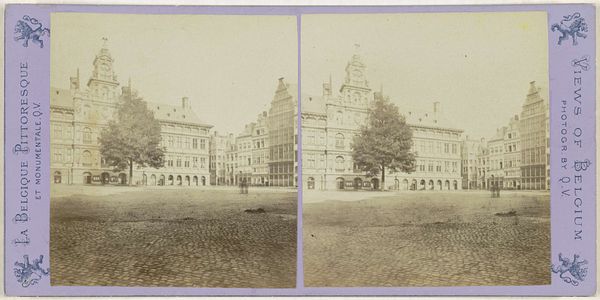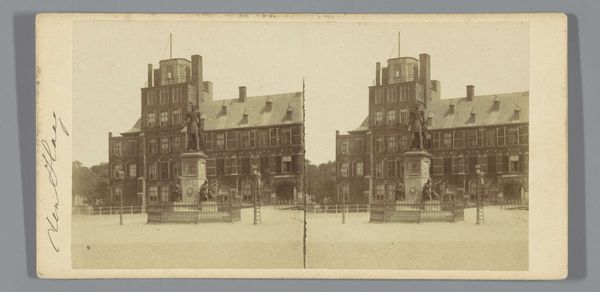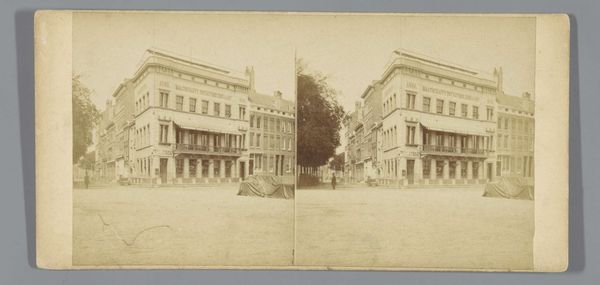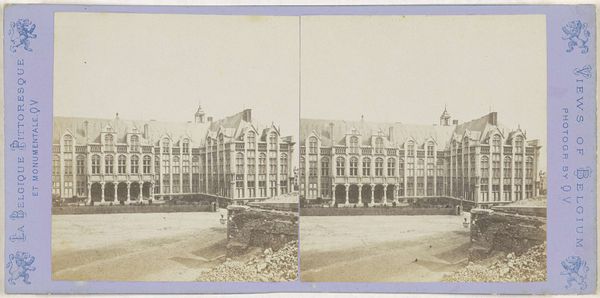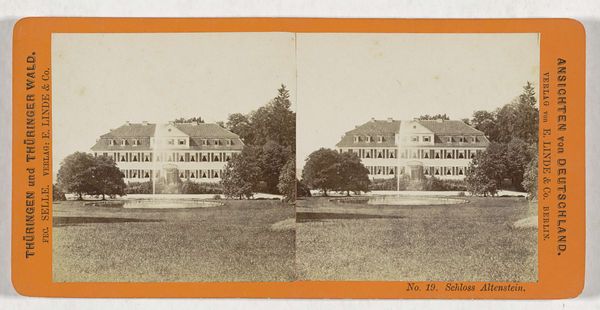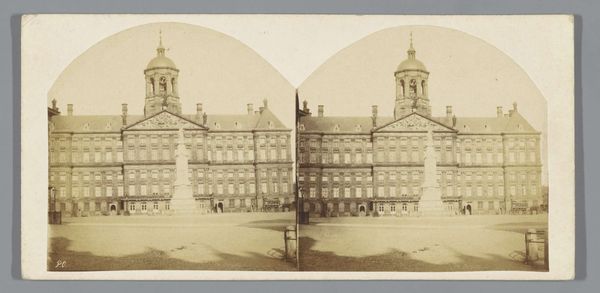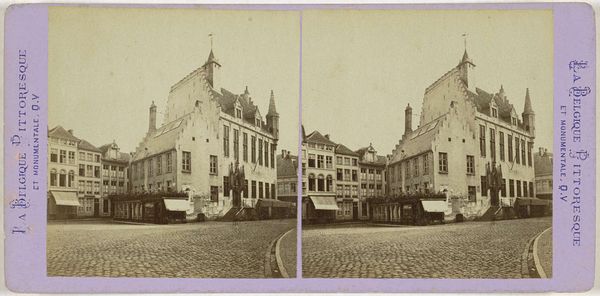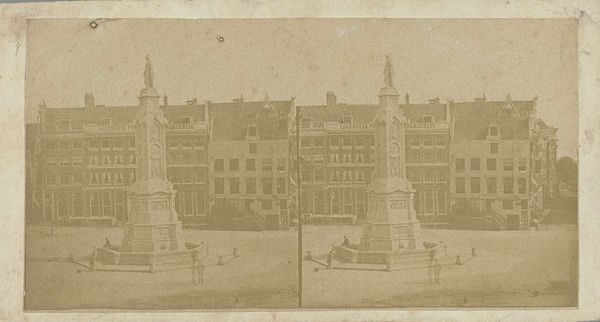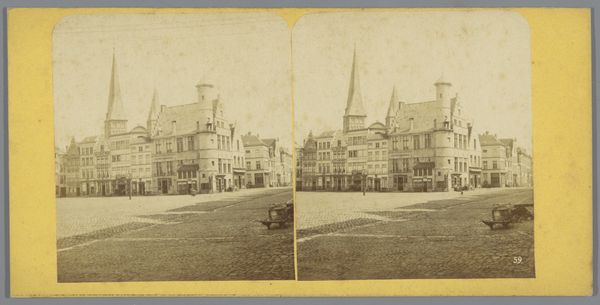
Gezicht op de noordzijde van de Grote Markt in Antwerpen met het oude woonhuis van Karel V 1866 - 1870
0:00
0:00
juleshippolytequeval
Rijksmuseum
Dimensions: height 85 mm, width 175 mm
Copyright: Rijks Museum: Open Domain
This stereoscopic photograph captures the north side of the Grote Markt in Antwerp. While the image itself is a product of the darkroom, the view it captures reflects a much older mode of production. Consider the architecture of the buildings, likely constructed by teams of masons, carpenters, and other skilled tradespeople. The buildings' stepped gables and ornate facades speak to a time when craftsmanship was deeply embedded in the urban landscape. The cobblestones, too, are a testament to manual labor and the slow accumulation of public infrastructure. Photography emerged as a disruptive technology, capable of capturing images with unprecedented speed and accuracy. This changed the demand of certain artistic production and opened new possibilities for mass communication, documentation, and tourism. The photograph is not just a record of a place, but also a reflection of the changing relationship between labor, technology, and representation. By considering these factors, we can move beyond a purely aesthetic appreciation of the image and understand it as a complex artifact that reflects the social, economic, and technological forces of its time.
Comments
No comments
Be the first to comment and join the conversation on the ultimate creative platform.
